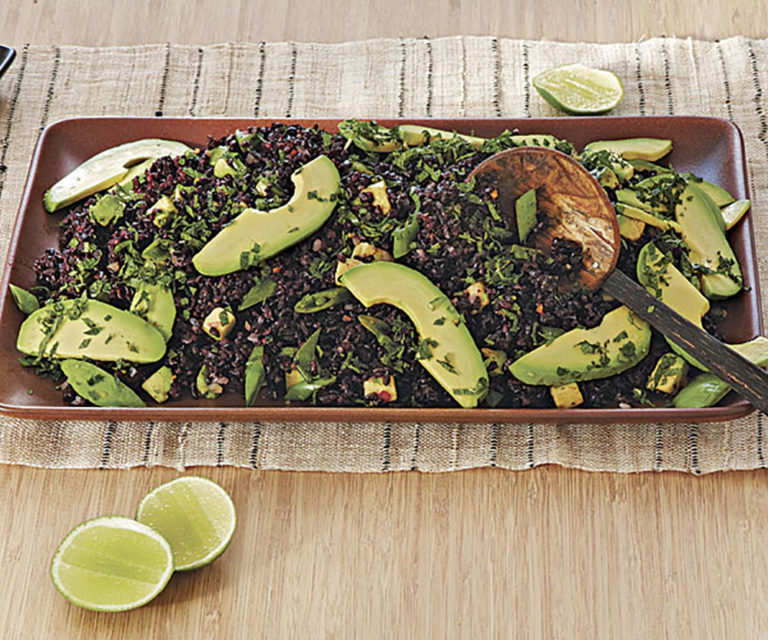
The Black rice or Forbidden Rice as it is called got its name as it was served only to the Royalty in China about 10000 years ago. Gradually through trade it diversified to Indonesia and even some places in Assam and Manipur. Cultivation in India started only in 2011 by a single farmer of a co-operative. His idea to reap this crop was shunned as it was extremely difficult to cultivate but with his efforts and perseverance the black rice reaped gold for him and soon the entire village started growing the rice. It is not easily available in the regular market and is often stocked in the gourmet food sections.

However it has been picked up now by many popular restaurants and is gradually making its way into the exotic diet plans of many of the health conscious. Its chewy texture and nutty flavor makes it possible for it to be used to make black flat noodles, sushi, puddings etc. It can also be used in a number of everyday indian dishes such as kheer, payasum, idlis too.






Black rice is highly ranked for its high levels of anthocyanin, a prized antioxidant. Anthocyanin is known to help in preventing cardiovascular disease, protecting against cancer, improving brain function as well as reducing inflammation. These are the same antioxidants that are present in berries such as acai berry, blueberries grapes etc as well as the dark purple eggplant. Black rice is low on the glycemic index, making it ideal for weight watchers and diabetics. It is also high on fiber and other minerals such as iron, magnesium, potassium and manganese.
A one-half cup serving of cooked black rice, or about cup uncooked, contains approximately (in daily recommended values):
- 160 calories
- 1.5 grams of fat
- 34 grams of carbohydrates
- 2 grams of fiber
- 5 grams of protein
- 4% DV for iron
Wondering how black rice compares to other rice varieties? Here’s how the different types of rice differ in terms of nutrient content when we compare a 100gm serving of each kind:
- Polished white rice contains 6.8 protein, 1.2 iron, 0.6 fiber.
- Brown rice: 7.9 protein, 2.2 iron, and 2.8 fiber.
- Red rice: 7.0 protein, 5.5 iron, and 2.0 fiber.
- Black rice: 8.5 protein, 3.5 iron, 4.9 fiber, and the highest amount of antioxidants of any rice variety.
It’s no wonder then that with the growing awareness of its benefits, it’s not too long before black rice is in the market for everyday consumption.

